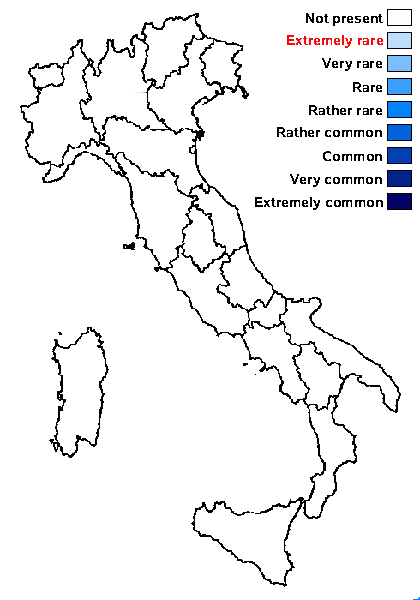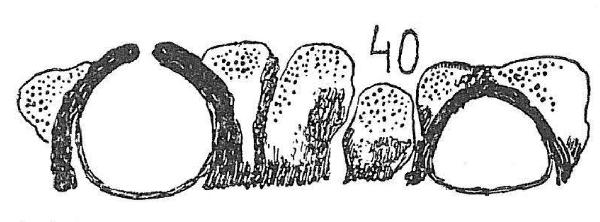Verrucaria lignorum Servít
Acta Mus. Nat. Prag. 5B, 9, Bot. 3: 32, 1949
Synonyms:
Distribution:
Description: Thallus crustose, episubstratic, grey-brown to brown-black, rimose to verrucose-areolate, forming up to 5 cm wide patches, without a distinct prothallus. Basal medullary layer with dark maculae present. Perithecia black. immersed in the thallus, the apex hardly projecting, c. 0.2 mm wide. Involucrellum hemispherical, extending down to exciple-base level, slightly diverging at base and fusing with the basal layer; exciple brown-black ; hamathecium of c. 20 µm long periphyses and periphysoids, interascal filaments absent; hymenial gel hemiamyloid. Asci 8-spored, clavate, I-, fissitunicate, the wall thickened above, with an ocular chamber, dehiscent by extrusion of an endotunica to form a delicate rostrum, Verrucaria-type. Ascospores 1-celled, hyaline, ellipsoid, 16-25 x 10-13 µm. Photobiont chlorococcoid. Spot tests: K-, C-, KC-, P-, UV-. Chemistry: without lichen substances.Note: on wood, rarely bark; rare throughout Central Europe, including the Eastern Alps (Austria, Carinthia). To be looked for in the Italian Alps.
Growth form: Crustose
Substrata: bark and lignum
Photobiont: green algae other than Trentepohlia
Reproductive strategy: mainly sexual

Predictive model
Growth form: Crustose
Substrata: bark and lignum
Photobiont: green algae other than Trentepohlia
Reproductive strategy: mainly sexual

Predictive model


